Frederica Freyberg:
I’m Frederica Freyberg. Tonight on “Here and Now,” a first look at a new book on Janesville. Before, during and after the General Motors plant. After that, a closer look at tax credits for manufacturing and farming. Then in our look ahead, stubborn future challenges for Wisconsin milk producers. It’s “Here and Now” for April 28.
Announcer:
Funding for “Here and Now” is provided in part by Friends of Wisconsin Public Television.
Frederica Freyberg:
A first look tonight at Janesville and what happened to the city and its people following the devastating closure of the General Motors plant there in 2008. The last Chevy Tahoe came off the line just before Christmas that year, knocking 9,000 people at GM and other businesses out of work. Our next guest called it an economic earthquake in her new book “Janesville: An American Story”. Pulitzer Prize winning Washington Post journalist Amy Goldstein tells the then and now story. A story we all followed but not like this. She joins us now. Thank you for being here.
Amy Goldstein:
Glad to be with you.
Frederica Freyberg:
The reason I say not like this is because this was amazingly thorough reporting, putting it kind of all together. Why did you want to go to Janesville?
Amy Goldstein:
I had this idea that you think back several years ago after the great recession and the economy still wasn’t very good that people across the country knew the unemployment numbers and there was all this discussion about the government’s policies and whether they were or were not helping the country recover from this bad economic time. But I thought people might not really understand what it feels like to people and to a community to have the best of its work go away and that’s the story that I wanted to tell. I chose Janesville because so many jobs went away. I was also drawn to it because unlike a lot of places in the Midwest that had industry, Janesville had never been part of the Rust Belt. I was interested in telling the story of what had happened out of this bad economic time, not kind of an accumulation of economic decay over the decades.
Frederica Freyberg:
How would you describe current day Janesville eight years later since GM closed. Has it recovered from the earthquake?
Amy Goldstein:
I think it depends how you measure recovered. If you look at unemployment numbers, unemployment had shot up to over 13% in early 2009, a few months after all these jobs vanished. Now it is under 5%. If you think of it in those terms, things are much better. If you look at the jobs that people have and what they’re paying, it’s not what it was. At the time that the assembly plant closed in Janesville, General Motors was paying the UAW workers $28 an hour. It’s hard to find working class jobs in Janesville today that pay anything like that.
Frederica Freyberg:
Meanwhile the “Janesville Gazette” editorialized this week, describing the city’s current economic prospects as brighter than expected after the GM plant closed and they credit today’s anti-union environment. Do you think it’s true that the economic prospects of Janesville exceeded expectations?
Amy Goldstein:
Certainly Janesville and Rock County are places that have been trying very hard to recover economically. There has been a county-wide coalition, Rock County 5.0 that has been working since shortly after the announcement that the plant was going the close to try to bring back jobs. There are some things to point to. Tangible things. There is a startup called Shine Medical that has been for several years now kind of working its way through a pretty complicated federal approval process to try to begin manufacturing a medical isotope in Janesville. Now, that company, assuming that the manufacturing can begin, is going to bring good jobs. It is going to bring about 150 jobs. If you think about the number of jobs, the thousands of jobs that went away and how many will come when this new company if it gets going actually starts, you can see it is not filling in much of the gap.
Frederica Freyberg:
You also describe in your book Janesville as kind of divided. The haves and the have less. Is this kind of the local expression of the American story as your title would suggest?
Amy Goldstein:
Well, my whole idea in doing this work was to write about a place that could serve as a microcosm. Not every community can stand in for every place in the United States. I didn’t think that was what Janesville was. But certainly over time, what had been a pretty cohesive community has become a little more polarized. That’s true in many parts of the country as people’s economic experiences have diverged with the number of good working class jobs shrinking a lot and there’s been political division that has heightened.
Frederica Freyberg:
To me in all of this the most striking findings that you describe have to do what usually seems to be the first response to layoffs or joblessness and that is worker retraining. I just want to cite some of the things you found. You report that job training was not a path to more work or better pay in and around Janesville. That laid off workers who went to school were less likely to have a job after they retrained than those who had not gone to school and that most of those who retrained were not earning any money at all. How surprising was it to find these things out?
Amy Goldstein:
They certainly weren’t what I expected. You know, the whole question of what should people do when a job they expected to have their whole life suddenly disappears, and, you know, is there a road back to being in the middle class? These have been, as we say, very well-paying jobs. It was a very interesting question to me. I work with a couple of labor economists to take a look at a group of people who were unemployed in southern Wisconsin in and around Janesville who had and had not gone back to Blackhawk Technical College, the main place that people went to try to get job retraining. And we looked statistically at what happened to people who went back to school and people who didn’t. It is not that nobody retrained and benefited from it. But as is true at community and technical colleges all around the country, many people went back to school who didn’t finish their programs and even some of those who did found that at the end of this hard work, there wasn’t a job waiting for them or not a job in their field. So there was kind of a double whammy that people had lost a job they thought they had identified a path forward, and at least these data are from a few years ago now. At least several years after all this work went away retraining wasn’t proving to be the panacea that sometimes people think it.
Frederica Freyberg:
And meanwhile a lot of money was put toward that.
Amy Goldstein:
That's right. Federal policies really encouraged people to retrain. There was coming through the Rock County Job Center a lot of federal aid for what is called dislocated workers to help people go back to school. And if you think about it, you know, imagine yourself having been a factory worker in your 30s or 40s. You haven’t been a student for half your lifetime. You didn’t think you needed higher education to get a solid job with a solid income. You have lost your work. You don’t know what is going to come next. You haven’t necessarily been somebody who likes school very much and there is all this economic trauma and then you are expected to study on top of it. It is a hard thing. Let me just say that, you know, as I got to know the people at Blackhawk Tech I was very impressed with the work they were doing. They tried very hard to figure out what factory workers coming back to be students needed and to provide it. So I don’t think that these results were anything denoting that the college hadn’t been trying hard. It’s just that there weren’t always jobs for people to come out and get.
Frederica Freyberg:
With just about a half minute left, if Janesville can make a kind of recovery after the loss of GM, will the city ever forget that part of its history, do you suppose?
Amy Goldstein:
You know, I think that General Motors was so essential to the identity of Janesville for so many decades. This was an assembly plant that started turning out tractors in 1919 and the first Chevy came off that assembly line in 1923. That’s a hard thing to forget.
Frederica Freyberg:
All right. Amy Goldstein. Thanks very much.
Amy Goldstein:
Thank you.
Frederica Freyberg:
A closer look now at tax credits. The manufacturing and agriculture tax credit was passed in 2011 to help two of our cornerstone industries, but the credit will cost the state 1 1/2 billion dollars over its first seven years and it won’t get any cheaper going forward. As the legislature considers how to pay for schools and roads, part of the debate asks if this tax credit helps create jobs or if it’s just a big giveaway. Zac Schultz reports.
Zac Schultz:
Belmark has been producing food packaging materials in De Pere, Wisconsin for 40 years.
Karl Schmidt:
It’s very safe to say you go in the grocery store, you look left and right and you will see our products.
Zac Schultz:
About a decade, Belmark President Karl Schmidt decided future growth would come outside Wisconsin and they built a facility in Phoenix, Arizona. But in 2011, Republicans in the legislature slipped a tax credit into the budget that forced Belmark to rethink their business plan.
Karl Schmidt:
The tax credit itself changed that strategy and we said you know, this is now an economical place to work. We can build some scale here.
Zac Schultz:
It's called the manufacturing and ag credit or MAC for short.
Jason Culotta:
The thought was let’s take the two largest industries in the state. Manufacturing and agriculture and let’s encourage them with this credit.
Zac Schultz:
Jason Culotta is the senior director of government relations for Wisconsin Manufacturers and Commerce, the influential conservative business lobby. The tax credit didn’t actually go into effect until 2013. It started small and grew larger each year.
Jason Culotta:
The thought was, if we phase it in we can control how much it is.
Zac Schultz:
The MAC reduces the state income tax for all manufacturing and agricultural producers in the state. But 91% of the money has been claimed by manufacturers. Wisconsin’s top income tax bracket is 7.65% for individuals and 7.9% for corporate filers. In the first year, the mac cut taxes by around 2% but now that it’s fully phased in, it reduces taxes on income by 7 %. So the MAC essentially wipes out the state tax burden for about 10,000 filers.
Gordon Hintz:
It is hard to imagine there being a less effective use of an awful lot of money.
Zac Schultz:
Democrat Gordon Hintz has been criticizing the MAC for six years.
Gordon Hintz:
Year after year we’d ask for new numbers and each year those numbers got bigger and bigger and bigger.
Zac Schultz:
The MAC has cost Wisconsin $468 million in the first four years. The state now estimates it will cost nearly a billion more in the next three. The nonpartisan legislative fiscal bureau estimates for tax year 2017, the MAC will cost $228 million. 77% of that money will go to just 1,200 filers who earn more than a million dollars a years from manufacturing or agriculture production. But what really grabs critics’ attention is the top 11 filers. They earn more than $30 million a year and will each save more than $2 million on their state income taxes.
Gordon Hintz:
The goal of this cut when it was first passed, when it was phased, was to eliminate the tax liability effectively of I think some of the wealthiest people in the state of Wisconsin.
Jason Culotta:
Are there people who make a lot of money who are receiving the credit? Sure. But they’re investing in the state. They’re producing here. They’re employing a lot of people here.
Zac Schultz:
Jason Culotta of WMC argues the money from the MAC isn’t just a blank check from the state.
Jason Culotta:
So it’s their decision ultimately what they decide to do with it. Many of them invest right back into the company.
Greg Clement:
The money doesn’t go into my pocket. It goes into buying that next piece of equipment.
Zac Schultz:
Greg Clement founded Argon Industries in 2002 with four people and three machines.
Greg Clement:
The next two years I’m going to have to invest almost $2 million in new equipment.
Zac Schultz:
He now has 100 employees fabricating sheet metal components for major companies. Clements says if he doesn’t continually upgrade his quality, he’ll lose business.
Greg Clement:
This machine is from 2003. So this is where the reinvestment and the money that comes from receiving those tax credit comes into play because the technology now coming out is fully automated loading, unloading.
Zac Schultz:
He says in recent years the MAC helped him install a new powder coat line which has helped grow his business.
Greg Clement:
That was 1.5 million dollars. We added 17 employees.
Tamarine Cornelius:
Just because a manufacturing business expands doesn’t mean they’re going to be hiring.
Zac Schultz:
Tamarine Cornelius says hiring may be the exception, not the rule. She’s an analyst for the Wisconsin Budget Project, part of the non-profit Wisconsin Council on Children and Families. One of her concerns about the MAC is the lack of accountability.
Tamarine Cornelius:
There is no requirement that jobs be created. So a business could be laying off workers or sending jobs overseas or closing factories and still get the tax cut.
Zac Schultz:
She points to Oscar Mayer which is shutting down its factory in Madison. They will get the credit for every last hot dog produced before the lights are turned off for good.
Tamarine Cornelius:
If we want businesses to create jobs in return for getting this big tax cut, then we need to require them to do so.
Jason Culotta:
The four years after that credit was enacted, we saw a regain of 34,000 jobs and there have been some more gains since then.
Zac Schultz:
Culotta says the MAC has led to job growth but opponents don’t see it.
Tamarine Cornelius:
For the previous year Wisconsin lost about 4,000 manufacturing jobs.
Zac Schultz:
Hintz says much of that growth was a rebound from the great recession and took place before the credit even started.
Gordon Hintz:
We actually had more manufacturing job growth in the two years before the credit was even phased in.
Zac Schultz:
Culotta points to the increasing cost of the tax credit as evidence of success. Over the first five years it will end up costing $376 million more than originally projected.
Jason Culotta:
We think so much of that has been investment that’s been drawn from out of state or from in-state companies which would have spent in another state and now it’s being spent here.
Zac Schultz:
Belmark is a good example of that. Their Phoenix, Arizona facility was supposed to be the first of many in other states. Since the tax credit was passed, they’ve added on in De Pere.
Karl Schmidt:
We've had six additions, most recently opened up a 30,000 square foot office addition. 240 jobs we added here that would not have been here that would have been in another state.
Zac Schultz:
And there is more to come. Schmidt says for their latest facility they did a nine-state search and settled on Shawano, Wisconsin.
Karl Schmidt:
We’re going to spend $25 million there to start. There will be another $25 million investment over the next five years and employ up to 120 people.
Dave Zielke:
We're expanding the business for our next five years of our growth.
Zac Schultz:
Dave Zielke helped found Imperial Blades in 2008. They are the only manufacturer of oscillating saw blades in the United States.
Dave Zielke:
It's a big selling point for us. American-made products are really sought after.
Zac Schultz:
Imperial Blades has 55 employees.
Dave Zielke:
We're looking to hire on 10 to 15 people in the next year.
Zac Schultz:
But they’ve outgrown their Sun Prairie location so they’re adding on.
Dave Zielke:
If we didn’t have the tax credit, that could be enough where this would get delayed.
Zac Schultz:
Imperial Blades could produce the same product anywhere in the United States and Zielke gets offers to relocate to other states all the time.
Dave Zielke:
Georgia, Texas, every other week I get an email or phone call from somebody.
Zac Schultz:
But the MAC helps keep him loyal to Wisconsin.
Dave Zielke:
We’re growing profitable business but we put so much money back into this just to stay ahead of our competitors that, I mean, any little bit helps. It really does help us.
Gordon Hintz:
I’m glad that we have a couple of examples where they seem to be happy and they’ve added jobs. But overall for the state I don’t think anybody can defend this as anything but a total loser.
Zac Schultz:
Gordon Hintz says there are more than 9,000 manufacturing facilities in Wisconsin and with the MAC, essentially none of them pay state income taxes and not all of them are adding jobs.
Gordon Hintz:
I did a tour recently of a manufacturer. I asked them about the credit. And they said yeah, when we were doing our taxes last year the first thing we said is we can’t afford this. And when they were talking about we, they were talking about the state because they realized their tax liability had been eliminated and they’re a relatively small manufacturer. If that’s happening around the state, they realized just how expensive it was.
Zac Schultz:
Hintz says manufacturers who oppose it are afraid to publicly criticize the MAC but he says the true impact of the MAC is felt every two years at budget time when there isn’t enough money for schools or the university system or transportation.
Gordon Hintz:
And so you have to look at this in what has been lost in terms of priorities that the state could have been funding while it was giving this money away with no accountability?
Jason Culotta:
I hate to get into a competition because we’re adding to the pie, we’re not taking from the pie by having this credit.
Zac Schultz:
Supporters of the MAC say you can’t ignore the impact of manufacturing jobs in Wisconsin.
Greg Clement:
If more people have jobs, more people are paying into the tax system. That’s what you need. And then you will gain that money for the roads and for the schools.
Dave Zielke:
And we work with seven different vendors in Wisconsin for making our saw blades.
Karl Schmidt:
I like to look at the multiplier effect.
Zac Schultz:
Karl Schmidt can point to a number of machines that he bought from other Wisconsin manufacturers who can also claim the MAC.
Karl Schmidt:
We’re going to buy the best in the world, but it's nice that you see it’s coming from Wisconsin.
Zac Schultz:
And all the people he has employed to build his new plants.
Karl Schmidt:
We've had two great builders here, Miron and Boldt. All the block comes from County Concrete. The electricians are here.
Zac Schultz:
But in the end, this may come down to a debate about Wisconsin's priorities and Wisconsin's identity.
Gordon Hintz:
I want to support our manufacturers but just throwing a lot of money at the top with no assurances, with no accountability is not fair to the rest of the taxpayers of the state. It’s not very effective.
Greg Clement:
What is Wisconsin's core? It’s agricultural and manufacturing. That’s what we built Wisconsin on.
Frederica Freyberg:
That was Zac Schultz reporting. A study released just last week says the manufacturing and ag credit helped create more than 20,000 jobs in Wisconsin. UW-Madison Economics Professor Noah Williams looked at 21 of Wisconsin's 22 border counties. He compared their manufacturing job growth since the credit started to counties just across the border in Illinois, Iowa, Minnesota and Michigan. He then applied that growth rate to the rest of the state to reach 20,000 jobs. However, Democrats like Gordon Hintz point out Professor Williams was an advisor to Governor Scott Walker and Senator Marco Rubio in their recent presidential campaigns. Hintz says the researcher cherry picked his data pointing out the one border county that was excluded, Trempealeau County lost manufacturing jobs last year and that would have altered the numbers. In tonight’s look ahead, while it’s not been confirmed by state ag officials, reportedly most of the dozens of Wisconsin dairy farmers left without a buyer for their milk have now found processors. Just ahead of being cut off May 1st. It was April 1st that their processor told about 75 farmers they could no longer buy their milk blaming curtailed Canadian imports. Since then other processors have picked up contracts. But for any farmer not picked up the choices are bleak. Going out of business or dumping their milk. The farm family we spoke with earlier this month did find a processor just in time. In trying to address the situation, Governor Walker announced this week the Wisconsin Housing and Economic Development Authority will offer more favorable loan terms to dairy farmers and processors allowing them to access capital. The larger takeaway of all of this from the owner of a small farm near Stevens Point is that quote dairy farmers are simply producing too much milk. Chris Holman is also a district director for the Wisconsin Farmers Union. Thanks for being here.
Chris Holman:
Thanks for having me.
Frederica Freyberg:
These farmers just went through a very anxious time, perhaps a few will face some very difficult choices without a buyer for their milk. First tonight your response to them.
Chris Holman:
Well, it’s been kind of a raw deal for them in the sense that they got that letter out of the blue. So the only thing I can say for them is that thankfully there are a lot of people working really hard trying to find solutions for them. Hopefully they’re long-term solutions and obviously everybody is hoping the best and that they’ll all be able to keep milking.
Frederica Freyberg:
As we noted your takeaway in all of this is that Wisconsin is producing too much milk. Describe what you call the vicious cycle of over production.
Chris Holman:
Sure. Well, when the price of milk is up people often want to produce more milk so that they can take advantage of that, which makes sense. But then also when the price goes down, production will go up because you need more to cover your bases, pay your bills, things like that. In either scenario you are producing more and more milk. Now if markets are down and you flood the market, then prices also go down like we have now. It kind of exacerbates the problem.
Frederica Freyberg:
But meanwhile Wisconsin has been promoting more milk production. How so?
Chris Holman:
In 2012 the governor put the dairy 30 by 20 program in encouraging farmers to meet 30 billion pounds by the year 2020. I believe we met that last year so we’ve certainly exceeded all expectations there. However, that program also seems to have exacerbated the problem once again in the sense that despite all the volatility in milk markets year to year in the past and presumably into the future, the message from, at least that program at the state level, was to keep producing more and more despite the fact there was not a place for it to go.
Frederica Freyberg:
Who wins under that program of trying to initiate more production of milk?
Chris Holman:
Well, it’s a tough question. In a sense the people who are able to weather the storms better are generally speaking the larger farms who often can produce at lower cost of production and they tend to have more advantages with banks. They can kind of float themselves through tougher times and Wisconsin is losing over a dairy farm per day without any of this situation anyhow. That production then gets picked up by those farms.
Frederica Freyberg:
So is this just the price of progress and modernity with these larger farms?
Chris Holman:
A lot of people look at it that way. If you think of it strictly in terms of efficiency, then yeah. But then why not just have one big dairy farm somewhere in the center of the country. Realistically what we are looking for is the rural America. These farms are kind of the backbone for rural America. If they disappear so does rural America along with the infrastructure and everything that’s in place and has been dwindling somewhat over time but is something that farmers at all scales benefit from.
Frederica Freyberg:
If we could find new or growing markets for the milk it would pay off presumably. How are we doing on that score finding new markets?
Chris Holman:
That's a great question. You know, exports are up, so in terms of finding markets, there seems to be places for it to go. Though a lot of the expectations coming out of China were not met and then couple that with the European milk coming online and dropping its quota system and bans of imports through Russia. Globally you have a glut situation where there is a lot of milk and despite any sort of improvements in the American market for exports we’re still saddled with a bunch of milk being dumped. A lot of milk being processed at full capacity everywhere you go. Ultimately speaking, it’s just a situation with no end in sight.
Frederica Freyberg:
Do you think the new WHEDA loan terms the governor announced will help?
Chris Holman:
Potentially they could help some. I’m personally not a big fan of trying to find ways to loan your way into the future. If you are highly leveraged it makes you more vulnerable and in the farm crisis of the 80s that was a big deal with high interest rates. Interest rates are low right now and it’s not exactly like the 80s. If you continue to encourage people to leverage themselves, then they kind of get stuck on the treadmill of sorts, trying to pay off those bills, pay off those loans. And if there is no markets and no place for your milk to go anyway, then it’s kinda all for naught.
Frederica Freyberg:
Chris Holman, thank you very much for joining us.
Chris Holman:
Thank you, too.
Frederica Freyberg:
Now for an update on concealed/carry permits. Governor Walker Wednesday signed legislation that allows gun owners five years of concealed carry permit regardless of when the permit is renewed. Under previous law licenses were only valid for five years after the date they were last issued. The measure passed through the legislature with bipartisan votes last month. Next week Lieutenant Governor Rebecca Kleefisch will be here. She’ll go over bills circulating at the state capitol that address the challenges of homelessness. I’m Frederica Freyberg. Have a great weekend.
Announcer:
Funding for “Here and Now” is provided in part by Friends of Wisconsin Public Television.
Search Episodes
News Stories from PBS Wisconsin
10/31/25
Evers signs bill that would allow certain candidates to remove their names from ballots in Wisconsin

Donate to sign up. Activate and sign in to Passport. It's that easy to help PBS Wisconsin serve your community through media that educates, inspires, and entertains.
Make your membership gift today
Only for new users: Activate Passport using your code or email address
Already a member?
Look up my account
Need some help? Go to FAQ or visit PBS Passport Help
Need help accessing PBS Wisconsin anywhere?

Online Access | Platform & Device Access | Cable or Satellite Access | Over-The-Air Access
Visit Access Guide
Need help accessing PBS Wisconsin anywhere?

Visit Our
Live TV Access Guide
Online AccessPlatform & Device Access
Cable or Satellite Access
Over-The-Air Access
Visit Access Guide
 Passport
Passport






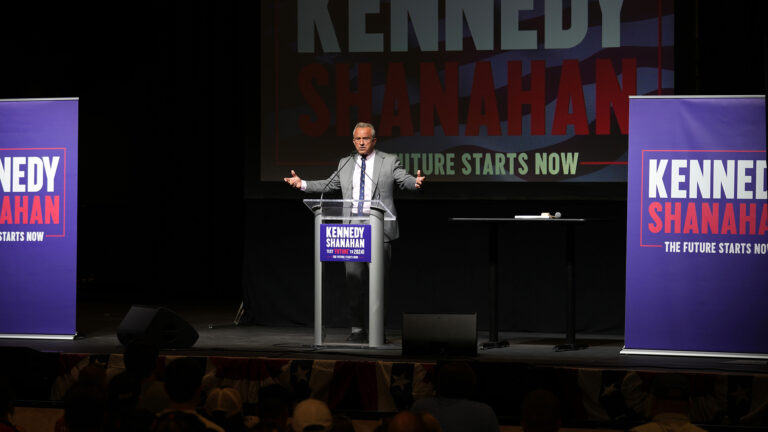
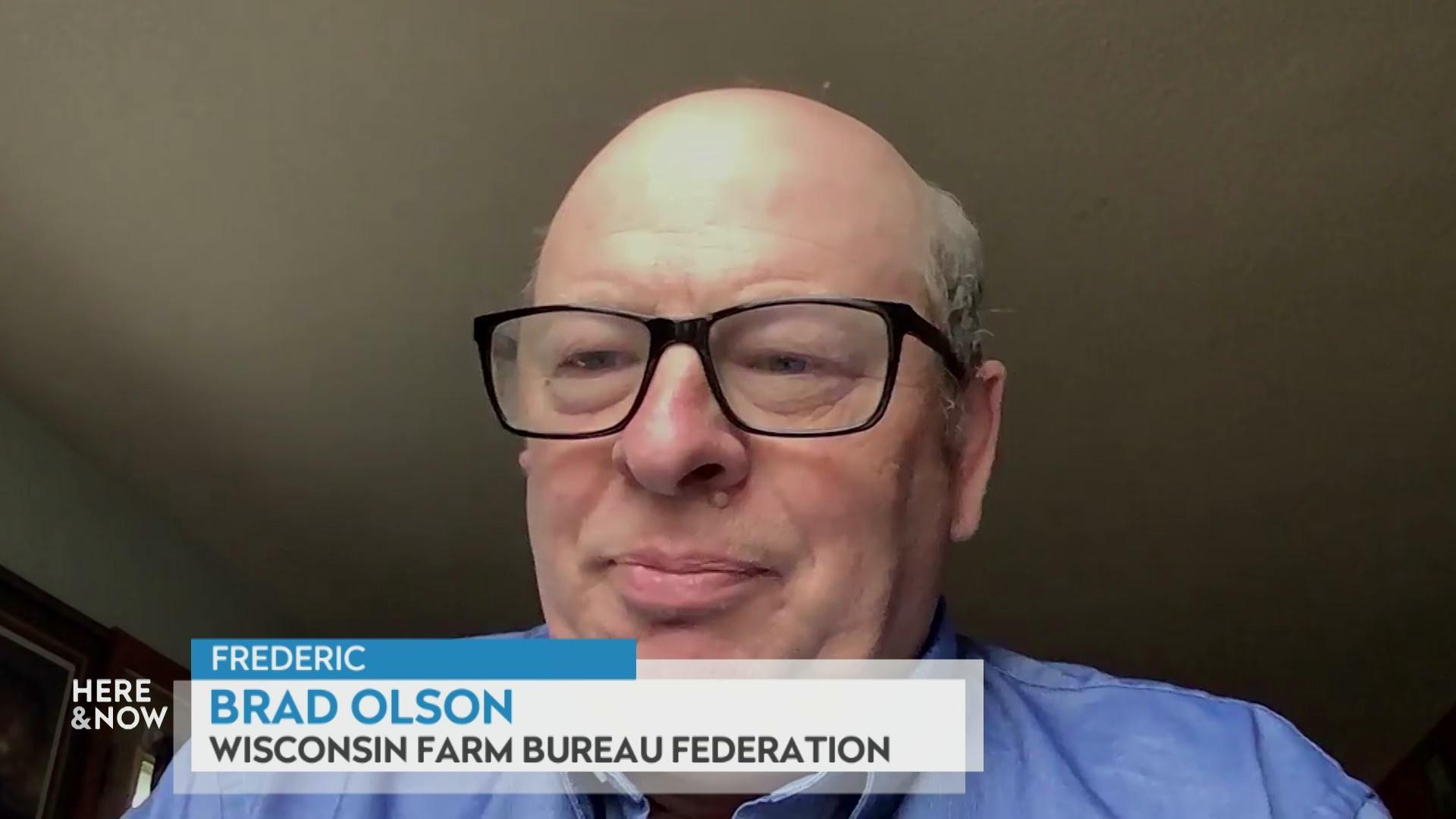
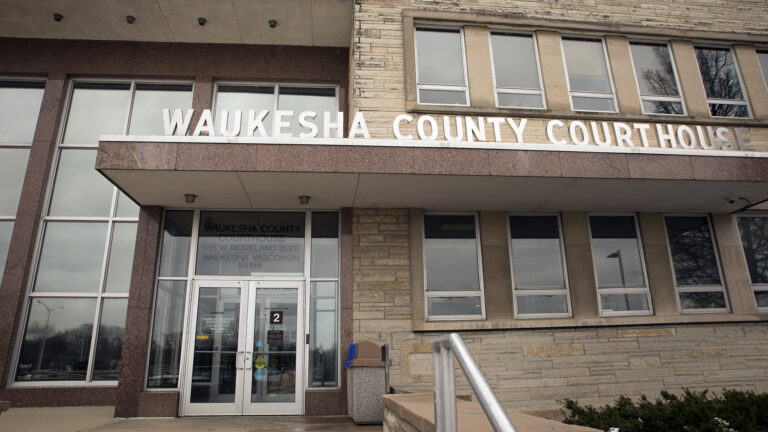
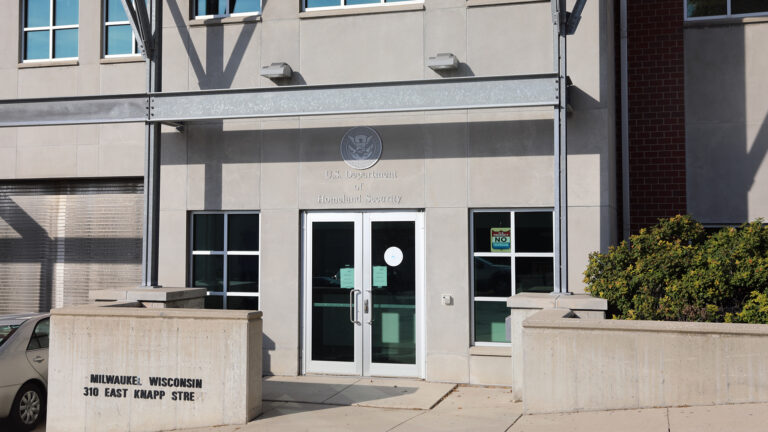
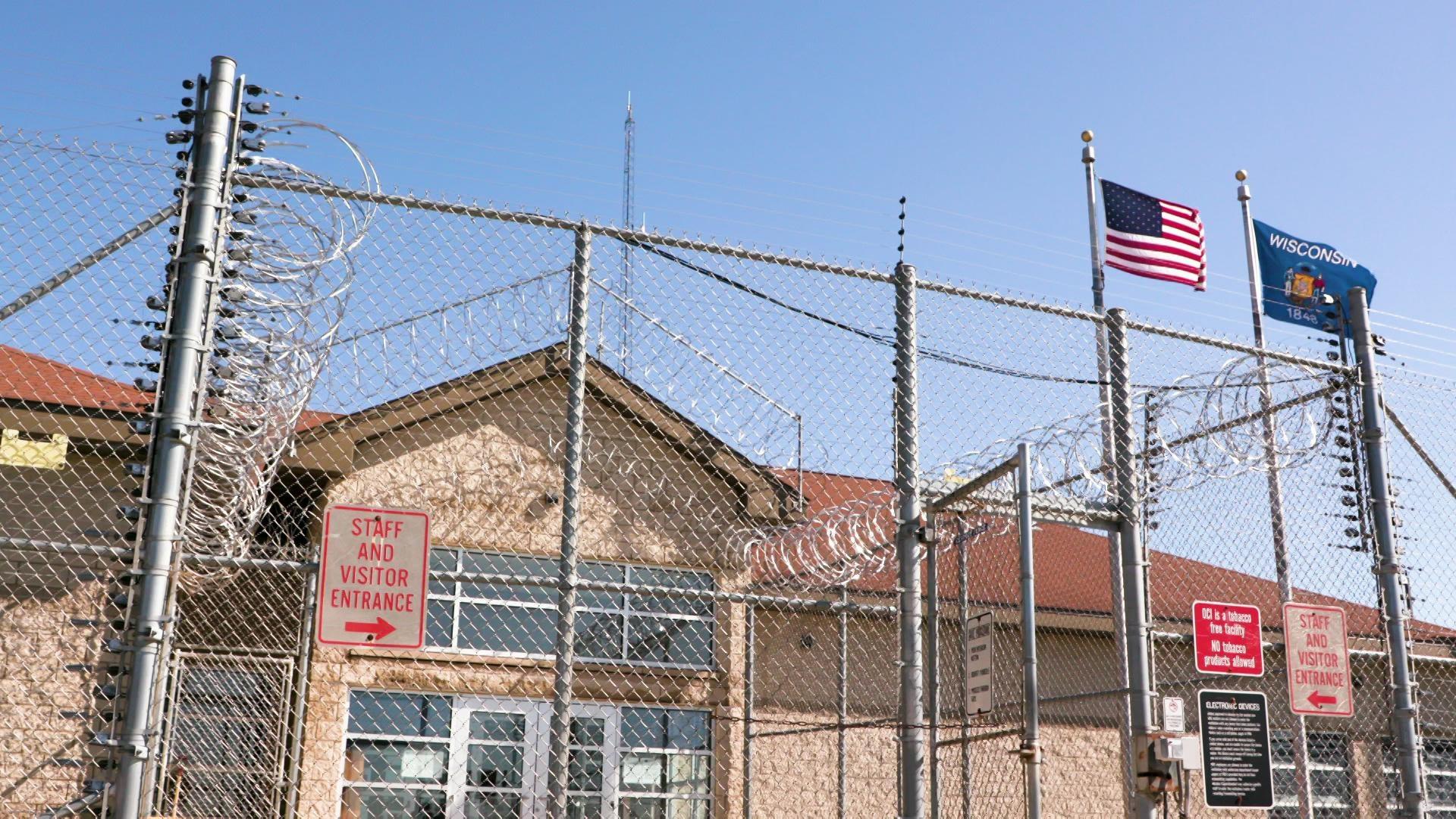
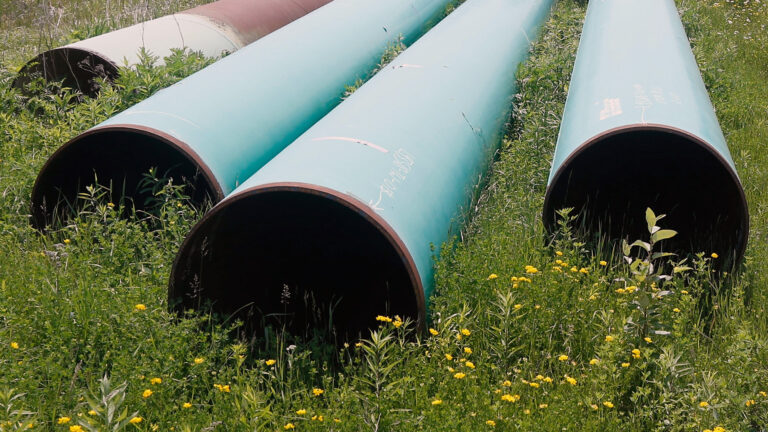
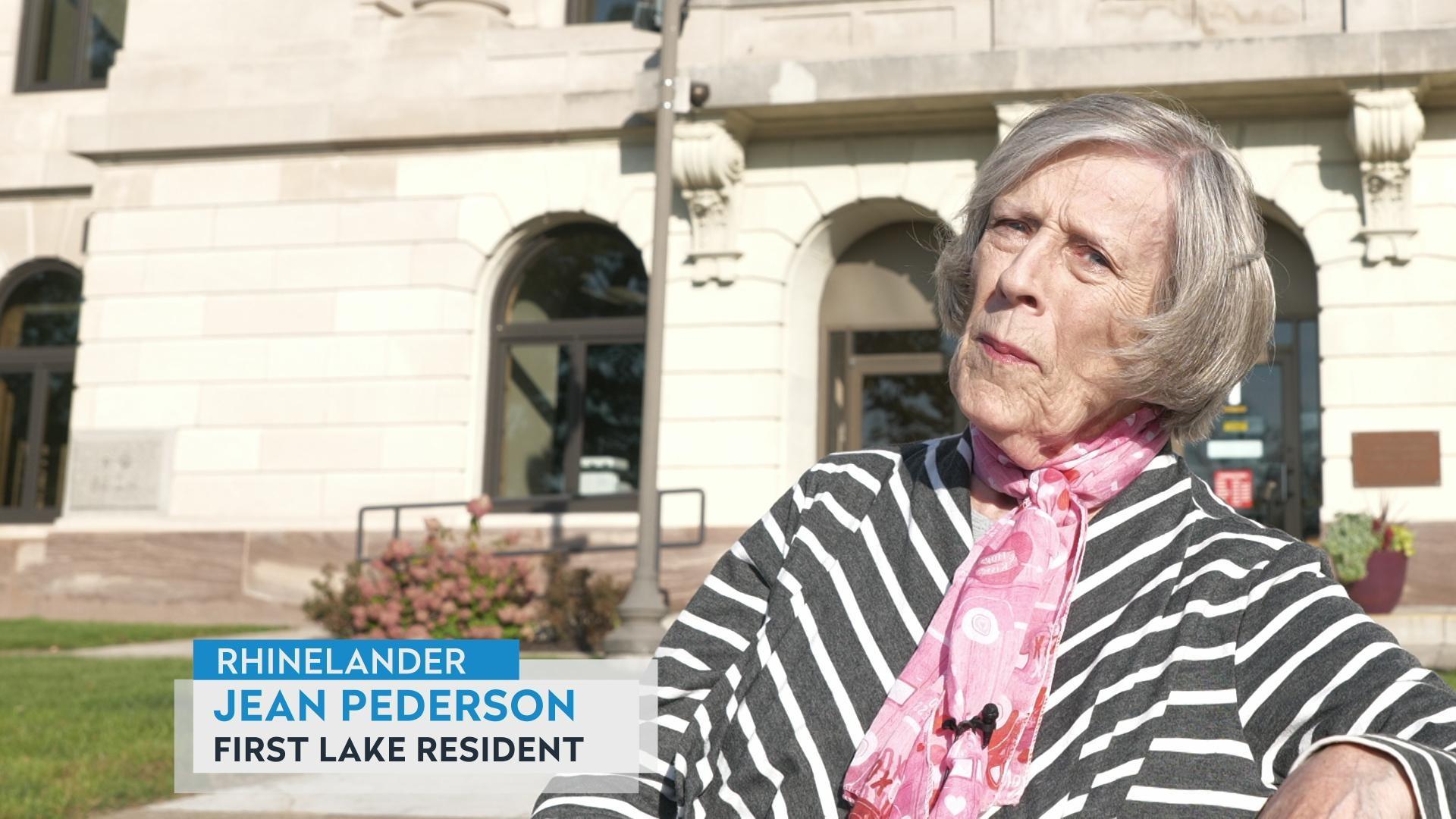


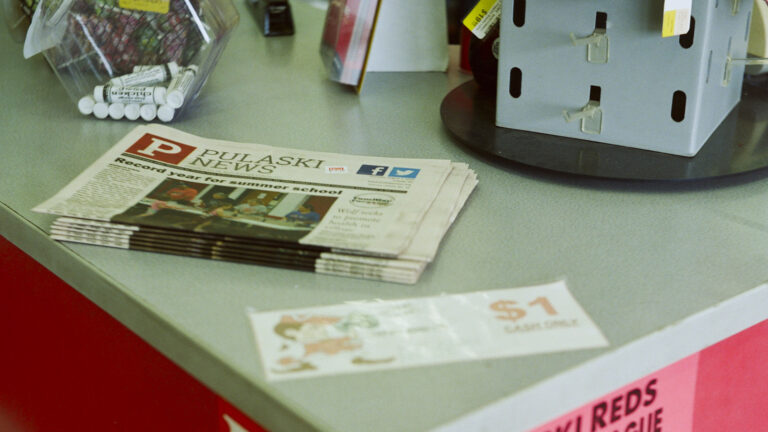
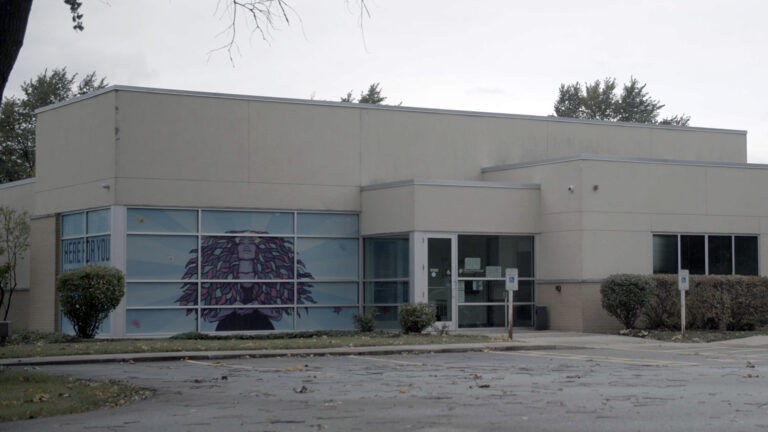

Follow Us